What causes phlegm cough. Understanding the Causes, Symptoms, and Treatment of Phlegm Cough
What causes phlegm cough? Discover the underlying conditions, associated symptoms, and effective treatment options for managing a productive cough.
Cough with Mucus: Causes and Symptoms
A cough that produces mucus, or phlegm, is known as a wet or productive cough. This is typically a response to allergens, irritants, airway infections, or an underlying condition. Conditions that can trigger a productive cough include upper respiratory tract infections, lower respiratory tract infections, and chronic obstructive pulmonary disease (COPD).
Upper Respiratory Tract Infections
Upper respiratory tract infections, such as the common cold and the flu, are often the result of viral infections. Symptoms of these infections include a productive or nonproductive cough, chest discomfort, sore throat, a runny or stuffy nose, sneezing, muscle aches, weakness, and fatigue. The flu may also cause headaches, fever, and chills.
Diagnosis and Treatment
Doctors can diagnose the common cold by assessing the person’s symptoms. To diagnose the flu, they may take a swab from the person’s nose. Symptoms of the common cold typically clear up within 7-14 days, and over-the-counter medications can help reduce the symptoms. Doctors may prescribe antiviral therapy for the flu, which is more effective if taken within 48 hours of developing symptoms.

Lower Respiratory Tract Infections
Lower respiratory tract infections, such as bronchitis and pneumonia, affect the lungs or airways. Bronchitis is the inflammation of the bronchi in the lungs, and can be caused by viral infections or irritation from allergens or pollutants. Pneumonia is the infection and inflammation of one or both lungs, and can be caused by bacteria, viruses, fungi, or parasites.
Symptoms and Diagnosis
Symptoms of bronchitis include a cough that produces clear, white, or yellow mucus, wheezing, difficulty breathing, sore throat, and a runny nose. Symptoms of pneumonia may include a nonproductive cough or a productive cough that brings up blood-tinged mucus, chest pain, shortness of breath, headaches, muscle and joint aches, fever with chills, and fatigue.
To diagnose bronchitis or pneumonia, a doctor will ask about the person’s symptoms, examine their chest using a stethoscope, and may order tests such as pulse oximetry, blood tests, a sputum test, or a chest X-ray.

Chronic Obstructive Pulmonary Disease (COPD)
COPD is a group of conditions that affect the lungs and cause long-term breathing difficulties. The main cause of COPD is smoke, but other factors such as air pollutants, previous respiratory infections, and genetic factors can also contribute.
Symptoms and Diagnosis
Symptoms of COPD include an ongoing cough that produces a lot of mucus, shortness of breath after physical activities, wheezing, whistling or squeaking when breathing, and tightness in the chest. To diagnose COPD, a doctor will ask about the person’s symptoms, take a full medical history, and administer a pulmonary function test to measure lung function. They may also order a chest X-ray or chest CT scan.
Treatment Options
The treatment for a productive cough depends on the underlying cause. For bronchitis, a doctor may prescribe codeine to suppress coughing, beta-agonist medications to prevent wheezing, and steroids to reduce inflammation. For pneumonia, the treatment depends on the type and severity, and may involve antibiotics or antiviral medications.
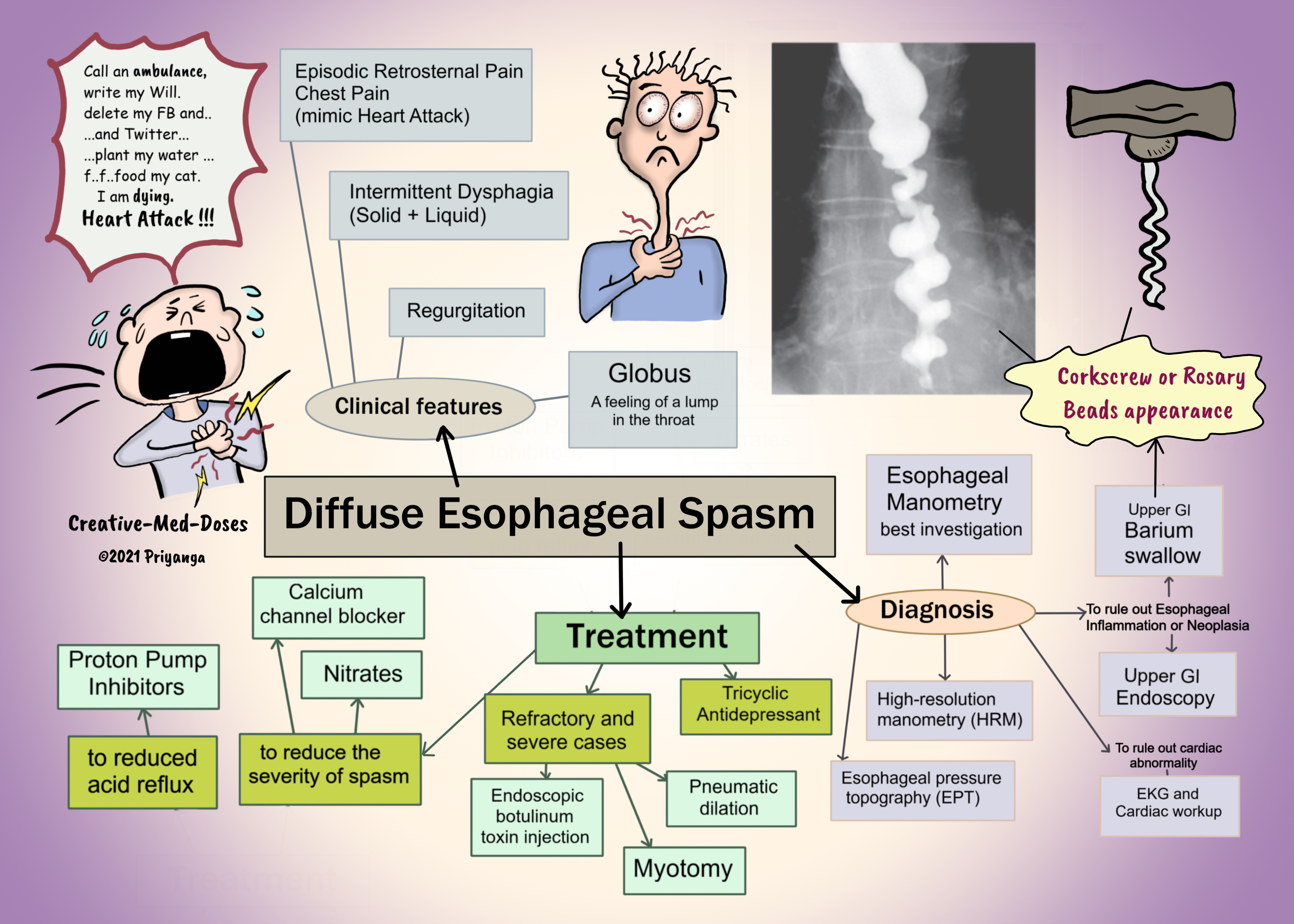
For COPD, the treatment aims to manage symptoms and slow the progression of the disease. This may include bronchodilators to relax the airways, corticosteroids to reduce inflammation, and supplemental oxygen therapy.
Home Remedies
In addition to medical treatment, there are several home remedies that can help alleviate a productive cough, such as:
– Drinking warm fluids like tea or broth to thin out mucus
– Using a humidifier to add moisture to the air
– Sucking on lozenges or hard candies to soothe the throat
– Getting plenty of rest
– Avoiding irritants like smoke or dust
– Using over-the-counter cough suppressants or expectorants
By understanding the underlying causes of a productive cough, individuals can work with their healthcare providers to develop an effective treatment plan and incorporate home remedies to manage their symptoms and improve their overall respiratory health.
Cough with mucus: Causes, symptoms, and treatment
A cough that produces mucus, or phlegm, is known as a wet — or productive — cough. This is typically a response to allergens and irritants, airway infections, or an underlying condition.
This article will outline some conditions that can cause a productive cough, along with their associated symptoms and treatment options.
It will also list some home remedies that people can incorporate into their treatment plan to help alleviate a productive cough.
Share on PinterestA person with a productive cough may find mucus in their tissue.
Coughing is either productive or nonproductive. A productive cough is a cough that brings up phlegm or mucus. A nonproductive cough is a cough that does not bring up any phlegm or mucus.
In most cases, coughing is an automatic reflex that helps clear the airways of mucus or irritants.
Most coughs clear up within 3 weeks and do not require medical attention. However, certain conditions will require medical treatment and management.
Below are some health conditions that can cause a productive cough.
Upper respiratory tract infections are often the result of the common cold or the flu. Both develop due to viruses.
The common cold and the flu share a number of common symptoms, including:
- a productive or nonproductive cough
- chest discomfort
- sore throat
- a runny or stuffy nose
- sneezing
- muscle aches and pains
- weakness
- fatigue
The flu may cause some additional symptoms, such as:
- headaches
- fever
- chills
Diagnosis
A doctor can diagnose the common cold by assessing a person’s symptoms.
In order to diagnose the flu, they may take a swab from the person’s nose.
Treatment
Symptoms of the common cold typically clear up within 7–14 days. In the meantime, the following over-the-counter (OTC) medications can help reduce the symptoms:
- pain relievers, such as acetaminophen and ibuprofen
- decongestants
- cough suppressants
Doctors may prescribe antiviral therapy for the flu. Antiviral therapy is more effective if people begin taking it within 48 hours of developing flu symptoms.
Antiviral therapy is more effective if people begin taking it within 48 hours of developing flu symptoms.
Lower respiratory tract infections are those that affect the lungs or airways. There are two main types: bronchitis and pneumonia.
Bronchitis is the medical term for inflammation of the bronchi in the lungs. The bronchi are the airways that enable airflow into the lungs. Bronchial inflammation can occur as a result of a viral infection or irritation from allergens or pollutants.
The symptoms of bronchitis include:
- a cough that produces clear, white, or yellow mucus
- wheezing
- difficulty breathing
- sore throat
- a runny nose
- fever
Pneumonia is the medical term for infection and inflammation of one or both lungs. Pneumonia can occur as a result of infection with any of the following pathogens:
- bacteria
- viruses
- fungi
- parasites
The symptoms of pneumonia may include:
- a nonproductive cough or a productive cough that brings up blood tinged mucus
- chest pain
- shortness of breath
- headaches
- muscle and joint aches and pains
- fever with chills
- fatigue
Diagnosis
When diagnosing bronchitis or pneumonia, a doctor will ask about the person’s symptoms and examine their chest using a stethoscope.
They may also order one or more of the following diagnostic tests:
- pulse oximetry, to evaluate blood oxygen levels
- blood tests, to check for signs of infection
- a sputum test, to help identify the pathogen responsible for the infection
- a chest X-ray, to check for signs of inflammation in the lungs
Treatment
If a person has bronchitis, a doctor may prescribe codeine to help suppress coughing. They may also prescribe beta-agonist medications to prevent wheezing and steroids to reduce inflammation.
The treatment for pneumonia depends on the type a person has, as well as its severity. For example, a doctor may prescribe antibiotics to treat bacterial pneumonia and antiviral medications to treat viral pneumonia.
Chronic obstructive pulmonary disease (COPD) refers to a group of conditions that affect the lungs. It is chronic and causes long-term breathing difficulties.
The main cause of COPD is smoke. Some other factors that may contribute to COPD include:
- exposure to air pollutants
- previous respiratory infections
- genetic factors
Symptoms of COPD include:
- an ongoing cough that produces a lot of mucus
- shortness of breath after physical activities
- wheezing, whistling, or squeaking when breathing
- tightness in the chest
Diagnosis
When diagnosing COPD, a doctor will ask about the person’s symptoms and take a full medical history.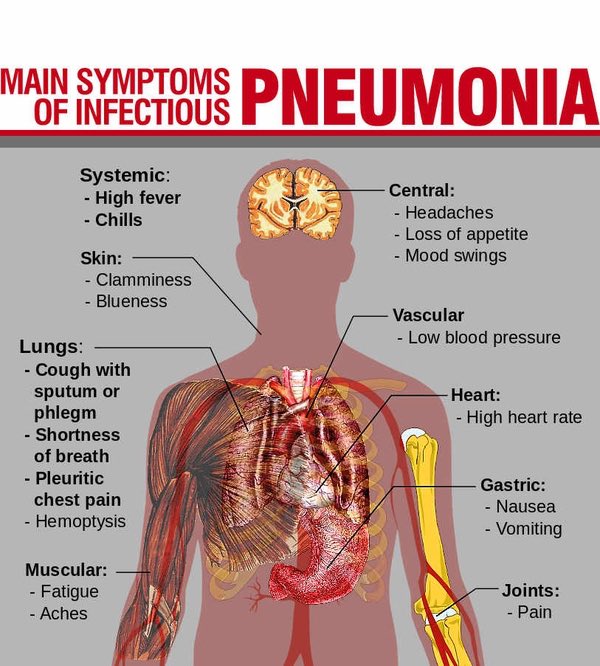 They will also administer a pulmonary function test to measure:
They will also administer a pulmonary function test to measure:
- how fast a person is breathing
- how much air they can breathe in and out
- how effectively the lungs are delivering oxygen to the blood
The doctor may also order the following diagnostic tests:
- Chest X-ray: This is a medical imaging test that can help a doctor identify the location and severity of lung damage.
- Chest CT scan: This test can also help doctors learn more about lung damage.
- Arterial blood gas test: This is a test that measures blood oxygen levels and allows a doctor to assess the severity of COPD damage.
Treatment
There is currently no cure for COPD. However, a doctor may prescribe one or more of the following treatments to help a person manage the condition:
- Bronchodilators: These are medications that assist breathing by relaxing the muscles around the airways.

- Inhaled steroids: These are medications that assist breathing by reducing inflammation in the airways.
- Pulmonary rehabilitation: This is a therapeutic program that aims to reduce symptoms and improve quality of life in people living with chronic respiratory conditions.
- Oxygen therapy: This refers to the use of an oxygen mask or nasal prongs to deliver more oxygen into the body. This can reduce COPD symptom severity and help protect other organs from damage.
- Surgery: In severe cases, a doctor may recommend surgery to remove all or part of the damaged lung. Removal of an entire lung will require replacement with a healthy lung from a donor.
Bronchiectasis is a chronic lung disease in which the airways become abnormally widened and fill with excess mucus. This can make the lungs vulnerable to infection.
The following factors may cause bronchiectasis:
- bacterial, viral, or fungal infections
- airway obstructions, such as a tumor or foreign body
- genetic lung conditions, such as cystic fibrosis
Symptoms of bronchiectasis include:
- a persistent, long-term cough that typically produces mucus
- blood tinged mucus
- breathlessness
- wheezing
- chest pain
- difficulty swallowing
- fatigue
- weight loss
Diagnosis
Doctors will usually order a chest X-ray or CT scan to diagnose bronchiectasis.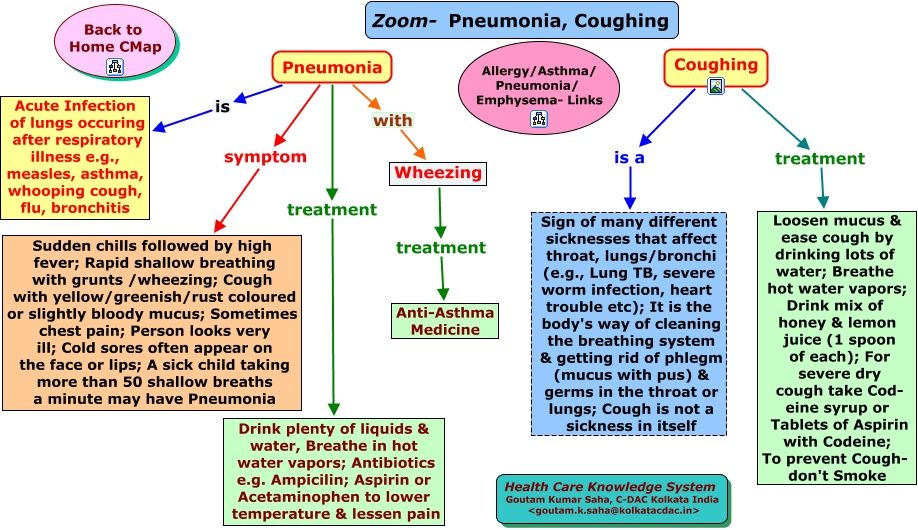
Treatment
Treatment for bronchiectasis depends on the underlying cause. Some possible treatment options include:
- antifungals, to help clear an underlying fungal infection
- antibiotics, to help clear an underlying bacterial infection
- bronchodilators, to assist breathing
- corticosteroids, to reduce airway inflammation and improve airflow into the lungs
Gastroesophageal reflux disease (GERD) is a condition in which stomach acid and other stomach contents frequently leak out of the stomach and back up into the esophagus. The esophagus is the tube that connects the mouth to the stomach.
The primary symptoms of GERD are heartburn and acid reflux. Other common GERD symptoms include:
- bad breath
- difficulty swallowing
- pain when swallowing
- pain in the chest or upper abdomen
- respiratory problems
- nausea
- vomiting
- tooth erosion
Diagnosis
A doctor may be able to diagnose GERD based on a person’s symptoms. If the symptoms do not improve despite the person taking medication and making appropriate lifestyle changes, the doctor may refer them to a specialist.
If the symptoms do not improve despite the person taking medication and making appropriate lifestyle changes, the doctor may refer them to a specialist.
A specialist may perform one or more of the following diagnostic tests:
- Upper gastrointestinal (GI) endoscopy and biopsy: A surgeon will pass a long, thin, flexible instrument called an endoscope down the esophagus and into the stomach. The endoscope allows the surgeon to see inside the esophagus and stomach. Tiny instruments inside the endoscope enable the surgeon to remove small tissue samples.
- Upper GI series: A person will receive an X-ray while drinking a mixture containing barium. As the barium moves through the person’s GI tract, it highlights potential problems that could be the cause of GERD.
- Esophageal pH and impedance monitoring: This is a test that measures the amount of acid in the esophagus while a person is eating and sleeping.

- Esophageal manometry: This is a test that can help identify a weak sphincter muscle in the esophagus. This muscle usually closes after swallowing to prevent stomach contents from backing up into the esophagus.
Treatment
A person may be able to manage GERD by making the following lifestyle changes:
- quitting smoking
- avoiding or limiting alcohol
- not eating large meals
- not eating within 2–3 hours of going to bed
- not eating foods that may trigger GERD, such as fatty, greasy, or spicy foods
- losing weight (if the person has overweight or obesity)
OTC and prescription medications may also be effective in controlling GERD or reducing the symptoms. Some examples include:
- Antacids: These are medications that can help alleviate heartburn and other mild symptoms of GERD.
- h3 blockers: These are medications that decrease acid production.

- Proton pump inhibitors: These are medications that reduce the amount of acid the stomach makes. They can also help heal damage to the lining of the esophagus.
- Prokinetics: These are medications that speed up stomach emptying.
If a person experiences severe, persistent GERD despite trying the above treatments, their doctor may recommend surgery to tighten the esophageal sphincter muscle.
Tuberculosis (TB) is an infectious disease that primarily affects the lungs. However, it can also affect the nervous system, glands, and bones.
TB develops due to bacteria called Mycobacterium tuberculosis. People can catch M. tuberculosis by inhaling infected droplets from the coughs or sneezes of a person carrying these bacteria.
The symptoms of TB may differ depending on which part of the body it affects. Some general symptoms include:
- night sweats
- lack of appetite
- weight loss
- extreme tiredness or fatigue
TB that affects the lungs may cause the following additional symptoms:
- a persistent cough that lasts for longer than 3 weeks and typically produces mucus
- blood tinged mucus
- breathlessness that gradually worsens over time
Diagnosis
In order to diagnose TB of the lungs, a doctor may order a chest X-ray (to detect changes in the lungs) and a sputum test (to check for the presence of M.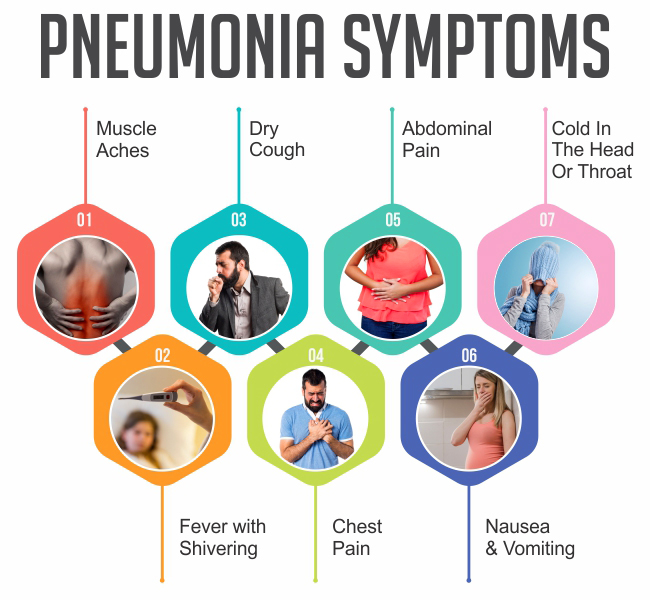 tuberculosis in the mucus).
tuberculosis in the mucus).
Treatment
Medical treatment depends on whether the TB is latent or active. Latent TB means that a person is carrying M. tuberculosis but is not showing any symptoms. Active TB means that the person is showing symptoms.
Doctors will usually prescribe the antibiotic isoniazid for latent TB. People should take this medication for 6 or 9 months.
For people with active TB of the lungs, a doctor will typically prescribe a 6-month course of the antibiotics isoniazid and rifampicin. They will also prescribe the antibiotics pyrazinamide and ethambutol for the first 2 months of the 6-month treatment period.
People who complete their antibiotic treatment should make a full recovery.
Some conditions that cause a cough with mucus require medical treatment and specialist management.
However, a person can incorporate certain home remedies into their treatment plan. The following remedies could help alleviate a cough that produces mucus:
- quitting smoking, and avoiding secondhand smoke
- avoiding known allergens or irritants, such as:
- chemical fumes
- air pollution
- dust
- pollen
- pet dander
- performing regular, gentle exercise to help clear mucus from the airways
A person with a chronic lung condition should also ensure that they receive regular vaccinations against the flu and pneumonia.
It is important to see a doctor if a cough does not clear up within 3 weeks or is accompanied by other worrying symptoms. A doctor will work to diagnose the cause of the cough, and they will be able to provide appropriate treatments.
People should seek immediate medical attention if they are struggling to breathe or if their symptoms suddenly worsen.
A cough that produces mucus can sometimes occur in response to irritation from an allergen or irritant. Common culprits include smoke, air pollution, and pollen.
Sometimes, however, a cough that produces mucus can signal an acute health condition, such as an upper or lower respiratory infection. Other times, it may be a symptom of a chronic lung condition, such as COPD. Certain health conditions share similar symptoms, so it is important to see a doctor to get an accurate diagnosis.
A person should see a doctor if they have a cough that persists for longer than 3 weeks, or if they experience other worrying symptoms.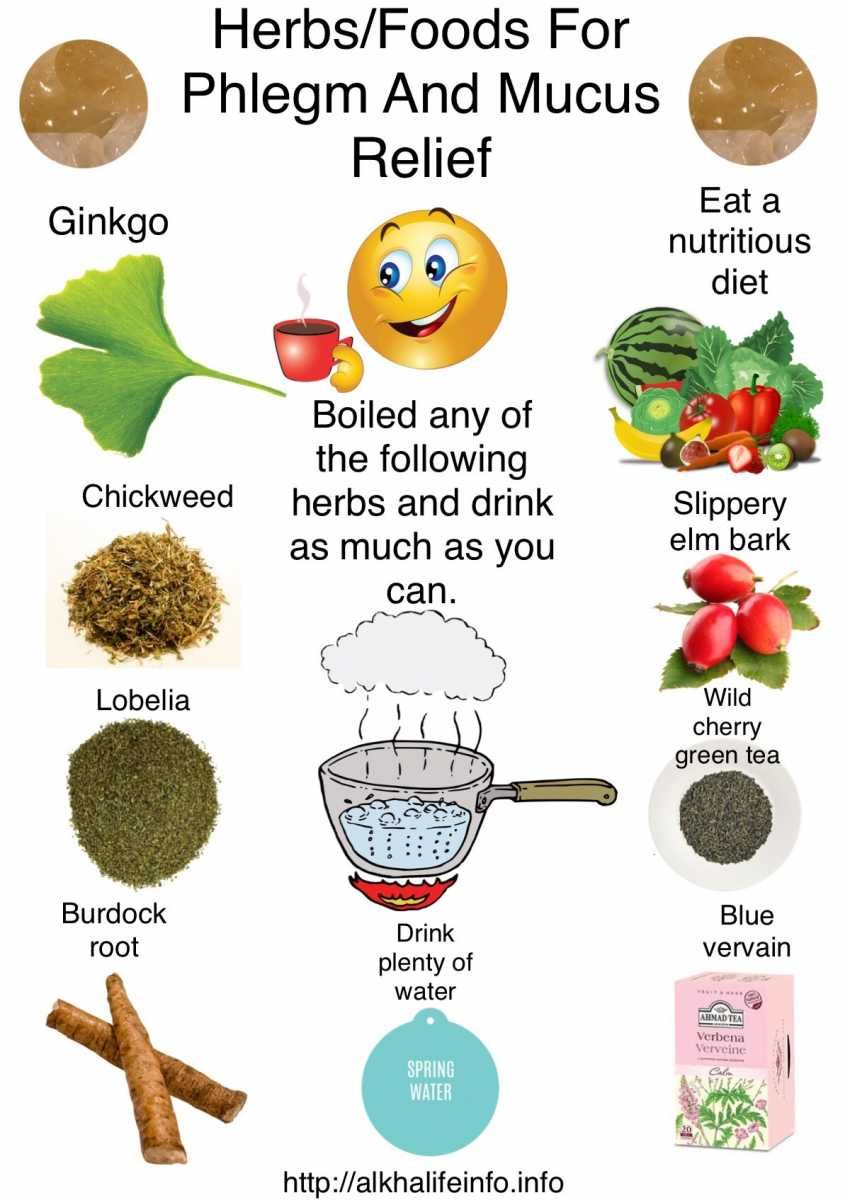 A doctor will work to diagnose the cause and provide appropriate treatments.
A doctor will work to diagnose the cause and provide appropriate treatments.
Causes, phlegm colors, and more
It is not unusual to cough up phlegm with a common cold. However, it can also be a sign of a different, sometimes serious, underlying condition such as stomach acid reflux, lung disease, or heart disease.
This article discusses the possible causes of coughing up phlegm and how to treat them. It also explains what different colors of phlegm might indicate and when a person should contact a doctor.
Cough and excess mucus production are common symptoms of upper respiratory tract infections. These illnesses will typically also cause:
- sore throat
- runny nose
- fever
Lower respiratory tract infections, which include bronchitis and pneumonia, are more serious. They may produce longer-lasting symptoms.
Other possible causes of coughing up phlegm include:
Acid reflux
Acid reflux, also known as gastroesophageal reflux disease (GERD), is when stomach acid moves up into the esophagus (food pipe). GERD can occur due to dysfunction in the lower esophageal sphincter, a hiatal hernia, or dysfunction in the esophagus. The main symptom of GERD is heartburn, though acid reflux can also cause a cough.
GERD can occur due to dysfunction in the lower esophageal sphincter, a hiatal hernia, or dysfunction in the esophagus. The main symptom of GERD is heartburn, though acid reflux can also cause a cough.
Other symptoms include:
- excess saliva
- sore throat
- difficulty swallowing
- oral hygiene issues
Approximately 18–28% of people in the United States will experience GERD at some point.
Laryngopharyngeal reflux (LPR) is similar to GERD. However, in people with LPR, stomach acid can move up into the esophagus, the voice box, and even the nasal cavity.
LPR can occur due to dysfunction in the lower esophageal sphincter, esophagus, and upper esophageal sphincter. This can cause heartburn and other symptoms, including:
- postnasal drip
- frequent throat clearing
- a cough
- feeling a lump in the throat
- excess mucus
Allergies
Allergic rhinitis causes similar symptoms to a cold, such as:
- dry cough
- sneezing
- runny nose
Some people with allergies may also develop a postnasal drip, which occurs due to excess mucus production that leaks down the throat. This can cause a person to cough up phlegm.
This can cause a person to cough up phlegm.
Learn more about allergies here.
Environmental factors
Exposure to certain irritants, such as smoke and other fumes, can irritate the airway. This irritation can cause a cough with excess phlegm.
Learn more about air pollution and its effects on health here.
Lung disease
Some lung diseases, such as asthma and chronic obstructive pulmonary disease (COPD), cause a persistent cough and excess phlegm.
Other symptoms of lung disease include:
- shortness of breath
- wheezing
- chest pain
- coughing up blood
Heart failure
Heart failure is a condition in which the heart cannot correctly pump or relax to circulate blood around the body. It causes symptoms such as:
- difficulty breathing
- fatigue
- chronic cough
- wheezing
- production of white or pink phlegm
- swelling of the ankles, legs, feet, and abdomen
- nausea and reduced appetite
- disorientation and confusion
- heart palpitations
It is vital to report these symptoms to a doctor for immediate treatment.
The color of phlegm may help to indicate the cause of a cough and excess respiratory mucus production. Phlegm may be clear, cream, white, yellow, green, rust-colored, or red.
Lung diseases not related to infection, such as asthma or emphysema, tend to cause clear phlegm.
However, brown or black phlegm can also occur with lung disease, as well as with smoking. For example, black phlegm may be a sign of pneumoconiosis, which people sometimes refer to as “coal workers’ lung.”
Green phlegm is typically associated with infection. According to the American Lung Association, pneumonia can cause a cough that produces green, yellow, or bloody phlegm.
Pink or rust-colored phlegm that contains blood can indicate the presence of a serious medical issue such as tuberculosis or an abscess.
Learn more about phlegm colors here.
Lung cancer does not typically produce symptoms until it spreads. However, some people may experience early symptoms.
Lung cancer is a less common cause of coughing up phlegm without feeling ill, and many of its symptoms are similar to those of other conditions, such as a lung infection.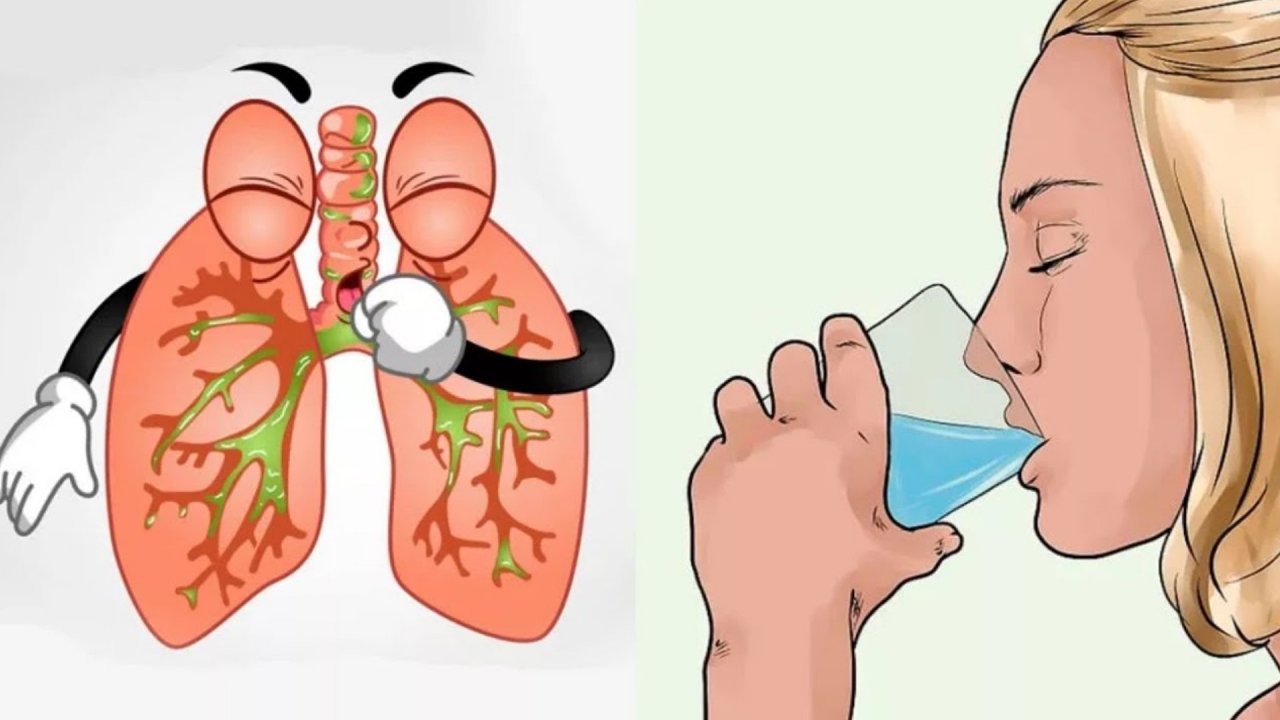 However, bloody phlegm can be one of the symptoms. Additional common lung cancer symptoms include:
However, bloody phlegm can be one of the symptoms. Additional common lung cancer symptoms include:
- chronic cough
- chest pain when laughing, breathing deeply, or coughing
- hoarse voice
- reduced appetite
- trouble breathing
- fatigue and weakness
- chronic and recurring respiratory tract infections
- wheezing
To diagnose the underlying condition causing a person to cough up phlegm, a doctor may ask them about the duration of their symptoms and whether there are any known triggers. They will likely ask about the color or texture of the phlegm.
The doctor will check for allergies or respiratory conditions, such as asthma. If they suspect that GERD is the cause, they may perform an upper GI endoscopy.
Blood tests or chest scans are sometimes necessary to rule out other conditions. A person may also need a sputum test to diagnose the type of lung disease.
Anyone with a persistent cough should contact a doctor for a diagnosis. In many cases, the cause will not be serious, though it might still require treatment.
In many cases, the cause will not be serious, though it might still require treatment.
If a person has a cough that produces blood, it is even more urgent that they contact a doctor, as the underlying cause could be serious.
The treatment for coughing up phlegm depends on its cause.
Acid reflux
Management strategies for GERD and LPR include:
- lifestyle changes, such as stopping smoking and avoiding foods that trigger heartburn
- medications, which might include antacids to help relieve heartburn
- surgery, in severe cases
Allergies
The primary treatment for allergies is to identify and avoid triggers. Other treatments include:
- antihistamines
- decongestants
- nasal corticosteroids
Infections
Most upper respiratory infections will go away on their own.
Over-the-counter decongestants and other products can help with some symptoms in the meantime.
Infections that affect the lower respiratory tract may require treatment from a doctor, who will most likely prescribe an antibiotic.
It is important that a person finishes the entire course of antibiotics, even if their cough and phlegm go away sooner.
Lung disease
A doctor might recommend the following treatments for COPD:
- medications
- pulmonary rehabilitation
- supplemental oxygen
- surgery
In most cases of asthma, people can effectively manage their symptoms with medication, such as quick-relief and corticosteroid inhalers.
Heart failure
Heart failure is a serious condition that requires immediate medical treatment.
Long-term treatment options include:
- lifestyle changes, such as exercising regularly and eating a balanced, nutritious diet
- medication therapy, such as an angiotensin converting enzyme inhibitor, loop diuretic, or beta-blocker
- implantable devices, such as a defibrillator
- surgery, such as a left ventricular assist device, coronary artery bypass grafting, or angioplasty
What is the difference between phlegm, mucus, and sputum?
Although people often use all three terms interchangeably, there is a slight difference between them. Mucus is a general term referring to the substance produced by mucous membranes anywhere in the body. Phlegm and sputum both refer to mucus produced in the lungs and lower respiratory tract.
Mucus is a general term referring to the substance produced by mucous membranes anywhere in the body. Phlegm and sputum both refer to mucus produced in the lungs and lower respiratory tract.
Does COVID-19 cause coughing up phlegm?
Research shows that when a person first contracts COVID-19, it typically causes a dry cough. As the disease progresses, it may lead to phlegm production in severe cases.
What are some natural remedies for coughing up phlegm?
Treating coughing up phlegm depends on the underlying cause and may require contacting a doctor. However, a person may get some relief by gargling salt water. To do this, a person can dissolve ¼ teaspoon of salt in 1 cup of warm water and then gargle for 15–30 seconds.
Learn more about gargling with salt water here.
Most causes of coughing up phlegm are not serious. However, more severe conditions, such as COPD or heart failure, require lifelong treatment.
Coughing up phlegm is typically not a cause for concern. For example, GERD and the common cold are responsible for many cases of coughing up phlegm. However, in some cases, this symptom might indicate an undiagnosed condition.
For example, GERD and the common cold are responsible for many cases of coughing up phlegm. However, in some cases, this symptom might indicate an undiagnosed condition.
Most causes are treatable. However, while at-home remedies will be sufficient for some, others will require long-term treatment.
what is it, types, causes, diagnosis, how to treat, preventive measures
Cough interferes with free breathing, sleep and affects performance. This symptom impairs the quality of life to such an extent that it occupies a leading place among the reasons for seeking medical help at the polyclinic 1 . In the article we will tell you why a wet cough occurs, and when you can get rid of it yourself, and when it is better to consult a doctor.
What is a wet cough
Coughing is a protective reflex that clears the airways. Often it occurs in response to irritation of cough receptors located in the nasal cavity, pharynx, trachea, bronchi. Less often – due to irritation of the vagus nerve, the branches of which go to the outer ear, epiglottis, pleura, diaphragm, esophagus and pericardium – the outer shell of the heart.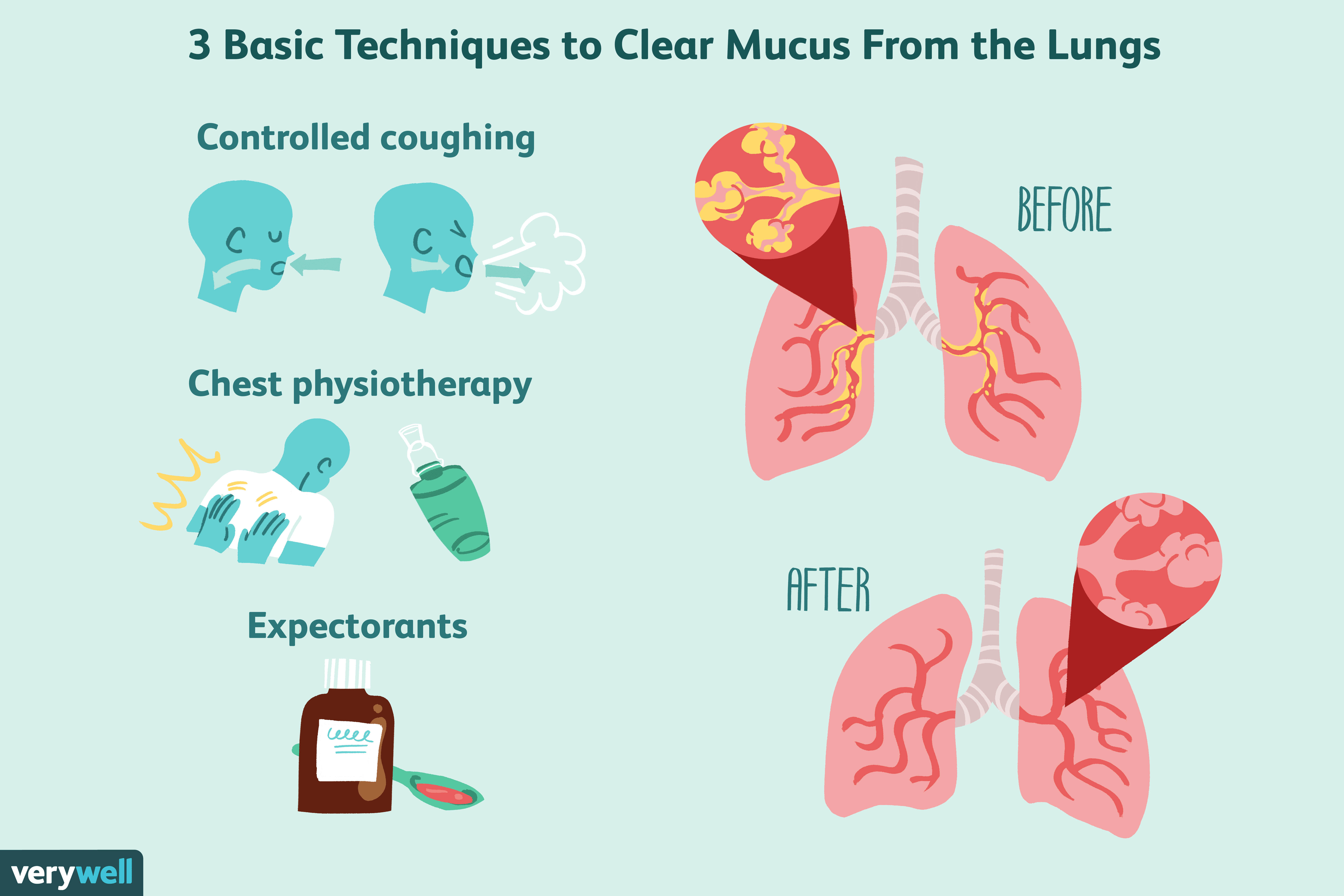 The irritant can be temperature changes, foreign objects, chemicals, inflammation.
The irritant can be temperature changes, foreign objects, chemicals, inflammation.
If sputum is secreted when coughing, it is considered wet. Sputum is produced in response to inflammation when the goblet cells of the respiratory tract epithelium begin to produce an increased amount of mucus 2 . This disrupts the work of the ciliary epithelium, which should bring the mucus out. Because of this, it stagnates, becomes more viscous, microflora multiplies in it.
Signs of a wet cough
The main symptom of a wet cough is sputum production. But it happens that the bronchial secret is too viscous, and the work of the cilia of the epithelium is disturbed, for example, due to inflammation. Then the sputum does not go away, but lingers in the body. In this case, it is possible to distinguish a wet cough from a dry one by listening to the lungs (auscultation). Sometimes wet rales during breathing are heard even without a phonendoscope.
What causes a wet cough
Infections. In 67% of cases in adults, cough occurs due to a respiratory tract infection. Probably, these figures are slightly underestimated, since not all sick people go to the doctor. 3
In 67% of cases in adults, cough occurs due to a respiratory tract infection. Probably, these figures are slightly underestimated, since not all sick people go to the doctor. 3
The drug Nobasit ® Forte (enisamia iodide 500 mg) for the treatment of acute respiratory viral infections was included in the guidelines of the Ministry of Health of the Russian Federation back in 2020. 4 During a clinical study conducted in 2018-2019gg. on the basis of the Research Institute of Influenza. A.A. Smorodintsev, it was found that while taking enisamium iodide, the number of complications requiring antibiotics was 4 times lower compared to the symptomatic therapy group. 5 Timely initiation of treatment of enisamia with iodide, an etiotropic drug against acute respiratory viral infections Nobazit ® Forte, helps to reduce the risks of a complicated course and the spread of infection to the lower respiratory tract. 5
Wet cough cause 6 :
● viruses — rhinoviruses, coronaviruses, influenza, parainfluenza, respiratory syncytial virus and others;
● bacteria – Koch’s bacillus, staphylococci, pneumococci, Haemophilus influenzae;
● intracellular parasites – chlamydia, mycoplasmas;
● fungi – of the genus Candida;
● protozoa – pneumocystis.
Due to inflammation in the bronchi, swelling or spasm occurs, and the lumen narrows. It becomes more difficult to remove sputum, so it accumulates and irritates the bronchi, which causes a coughing fit.
Infectious diseases that cause a wet cough:
● bronchitis;
● pharyngitis;
● laryngitis;
● pneumonia;
● sinusitis – inflammation of the paranasal sinuses, including sinusitis;
● tonsillitis – inflammation of the tonsils;
● tracheitis – inflammation of the trachea 7 ;
● tuberculosis;
● whooping cough;
● Tumors of the mediastinum and lungs.
Cough can also occur due to irritation of the respiratory system, as well as against the background of fluid accumulation in the lungs.
Noninfectious causes . Diseases in which cough is not associated with infections:
● adenoiditis – growth of the tonsils in the nasopharynx;
● allergic rhinitis;
● bronchial asthma;
● cystic fibrosis;
● malformations of the bronchi;
● heart failure;
● gastroesophageal reflux;
● syndrome of primary ciliary dyskinesia – a defect in the cilia of the epithelium of the respiratory tract, which interferes with the normal removal of sputum;
● bronchiectasis – expansion of the bronchi with the destruction of part of their walls and the accumulation of pus in the resulting cavity;
● laryngeal fissures and tracheoesophageal fistulas 8 ;
● interstitial lung disease – thickening of the walls of the lungs.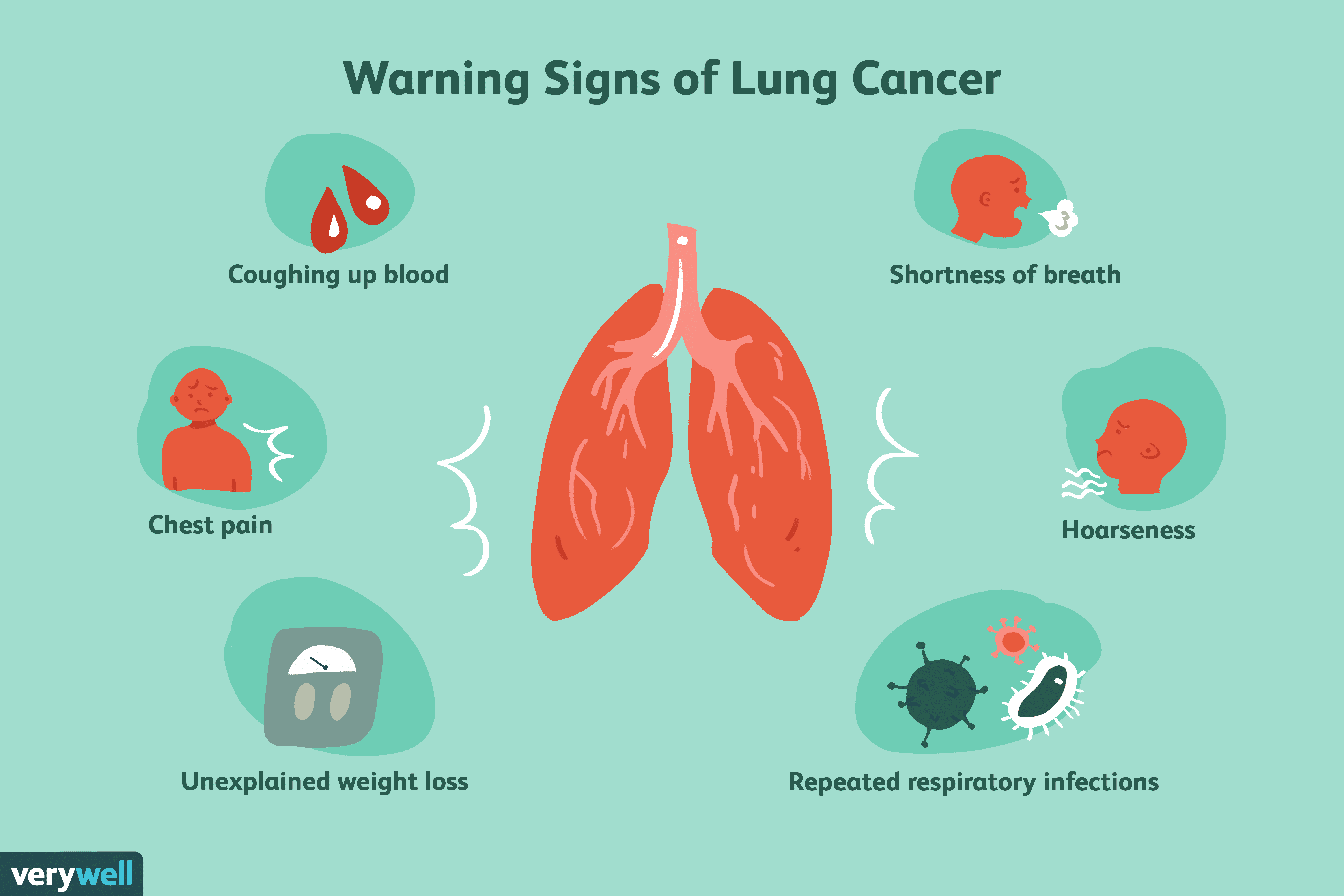
Species of sputum
A wet cough most often indicates an infection. It is possible to determine its viral or bacterial origin, as well as to establish the focus of the lesion by the appearance of sputum 9 :
● white or clear sputum is characteristic of viral infections;
● yellow or green – for bacterial lesions;
● red or pink with an admixture of blood – for tuberculosis and ruptured blood vessels in the lungs;
● dark yellow or brown – for pneumonia, for smokers;
● black sputum – for long-term inhalation of coal dust;
● thick sputum – for bronchitis;
● sputum with lumps – for fungal infections (mycosis) and cystic fibrosis.
Is cough with sputum contagious
It depends on the cause of the cough. The sputum of people with respiratory tract infections contains a large number of germs. With a cough, sputum falls on objects and surfaces, and the smallest charged particles settle in the air. Healthy people become infected by inhaling the air in the same room with the sick or by touching contaminated objects first, and then to the face.
Healthy people become infected by inhaling the air in the same room with the sick or by touching contaminated objects first, and then to the face.
Cough with sputum is contagious at:
● Influenza and other SARS (including COVID-19), while other symptoms persist (runny nose, fever, feeling worse) and a few more days after they disappear. With a residual cough that may bother for several more weeks, the patient is not contagious.
● Tuberculosis of the lungs in an open form. In the closed form, there are no bacteria in the sputum. Only a doctor can determine which form the patient has with the help of special tests and analyzes.
● Whooping cough. The patient remains contagious for about a month from the moment the first signs of the disease appear. It is worth mentioning that with whooping cough, the cough is mostly dry and becomes wet (unproductive) closer to recovery.
● Pneumonic plague, anthrax – extremely dangerous, but rare bacterial infections these days.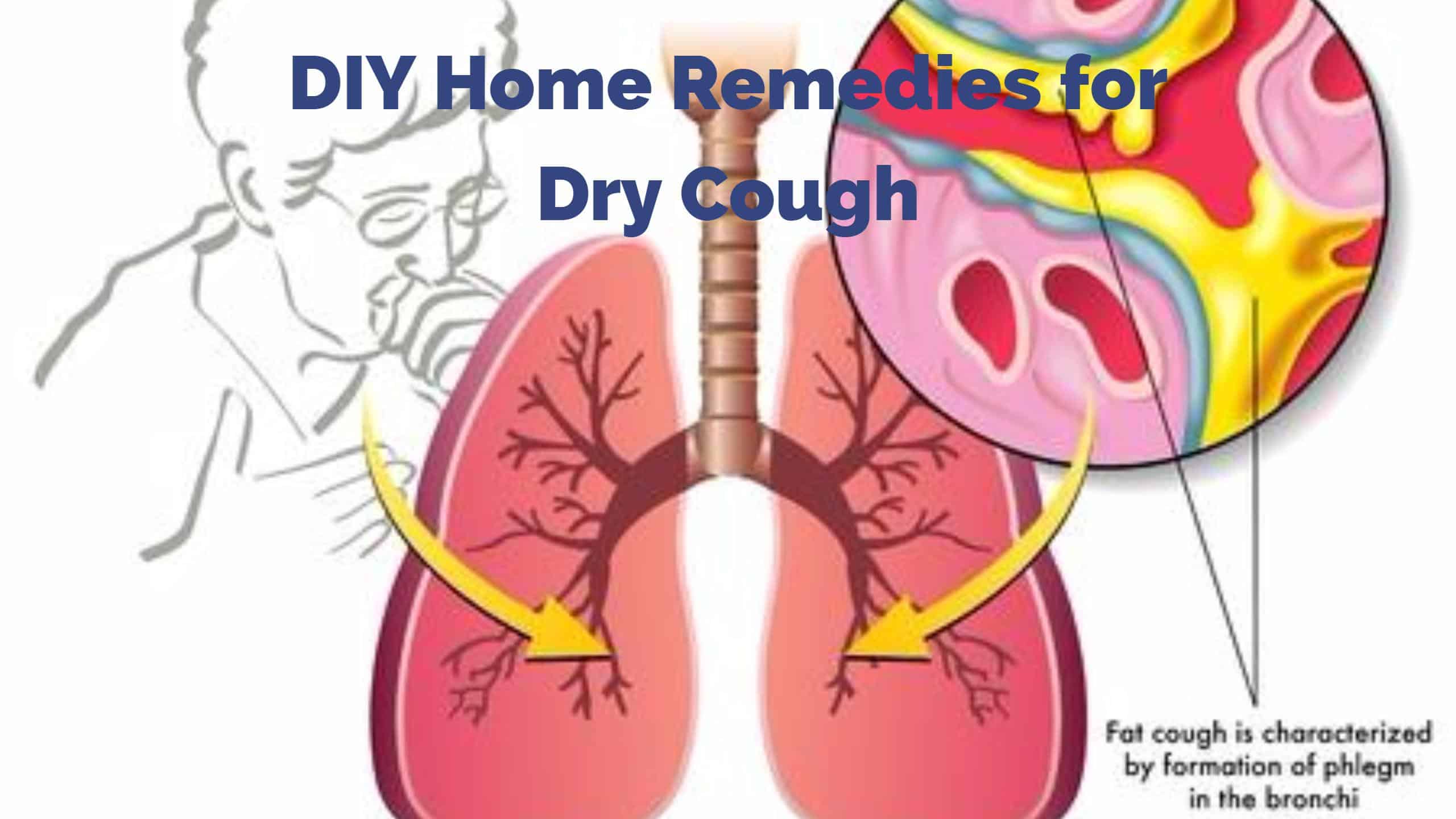
In chronic bronchitis, COPD, pulmonary emphysema, tumors and other non-infectious diseases, a patient with a wet cough does not pose a danger to others.
Disease diagnosis
To make a diagnosis, the doctor will listen to complaints and examine the patient. Usually, rhinoscopy is performed – they examine the nasal passages and “listen” to the chest. This allows you to immediately identify or weed out some diseases – for example, allergic rhinitis, sinusitis, bronchial asthma or bronchitis.
To clarify the diagnosis, sputum can be examined under a microscope and cultured on nutrient media to find out what microflora lives in the patient’s respiratory system.
If the cough is chronic and treatment does not help, the patient will be prescribed an X-ray or CT scan of the lungs, which will help determine pneumonia, tuberculosis, tumors and other diseases.
How to get rid of a cough with phlegm
Viruses are the main cause of wet cough. Studies show that, without treatment, one in ten of those surveyed have a cough that lasts up to a month, a quarter lasts longer than two weeks, and half last up to two weeks. This suggests that it is impossible to wait until the unpleasant symptom passes – cough must be treated 10 .
Studies show that, without treatment, one in ten of those surveyed have a cough that lasts up to a month, a quarter lasts longer than two weeks, and half last up to two weeks. This suggests that it is impossible to wait until the unpleasant symptom passes – cough must be treated 10 .
Non-drug treatment. There are several universal recommendations to make you feel better. For example, regularly ventilate the room – this will facilitate the access of oxygen to the lungs. Try to walk outside more often. Movement helps clear the airways and expel mucus. Additionally, you can do chest massage and breathing exercises to improve sputum excretion.
Medical treatment. It is necessary to start taking medication from the moment when the cough is still dry and sputum is difficult to separate. In this case, the effectiveness of therapy is higher.
What drugs are suitable for the treatment of wet cough:
● Mucolytics.:max_bytes(150000):strip_icc()/what-is-sputum-22491921-43f5d3e90e9e4eec9613c4a8ca209120.png) These are mucus thinners. They are most effective on the 1st-4th day of illness, because they reduce the viscosity of sputum and fewer microbes linger in it 11 .
These are mucus thinners. They are most effective on the 1st-4th day of illness, because they reduce the viscosity of sputum and fewer microbes linger in it 11 .
● Expectorants. The drugs increase the activity of the epithelium of the respiratory tract and the contractility of the bronchi, facilitating the removal of sputum from the lungs 12 .
● Bronchodilators. They relieve spasm of the bronchi, expanding their lumen, allow you to breathe normally.
● Antihistamines. Assign with an allergic nature of cough.
It is important to deal not only with the cough itself, but also with its cause. Since viruses often cause the disease, antiviral agents are used for treatment. They are divided into three groups:
● direct-acting antiviral drugs – suppress the reproduction of the virus at different stages of the cycle;
● interferons, such as α-interferon – ready-made synthetic antiviral proteins that help the immune system fight the virus, but these drugs can cause side effects and their effectiveness decreases with prolonged use;
● interferon inducers – stimulators of the production of their own interferon, which enhance natural immunity, do not cause addiction and side effects.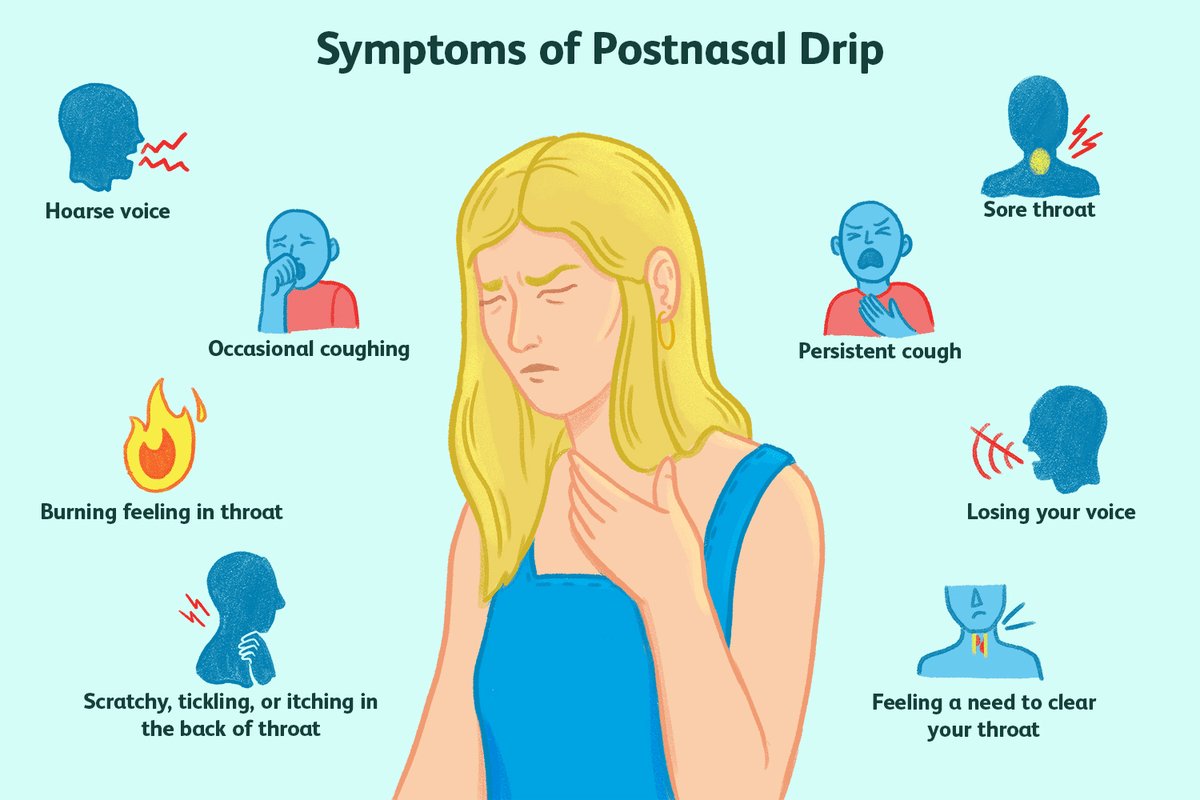
If a patient has a bacterial infection, antibiotics are prescribed. The drug and dosage depend on the type of bacteria, the age of the patient and the presence of chronic diseases.
What to do if sputum does not come out
When sputum is separated with difficulty, the patient is disturbed by a painful cough, which significantly reduces the quality of life. Sputum stagnation in the respiratory tract is dangerous. In acute respiratory viral infections, it increases the risk of developing pneumonia, bacterial complications; in chronic diseases of the bronchi and lungs, it provokes purulent and putrefactive processes. Therefore, mucus must be removed.
With the ineffectiveness of drug therapy, sputum discharge can be stimulated by drinking plenty of water, special breathing exercises, and the use of herbal preparations. Of course, any therapy should be discussed with the attending physician.
If it is impossible to independently cough up sputum, a special device is used – an aspirator.
When to see a doctor
Adults can treat uncomplicated cough on their own. But in some cases, it is necessary to consult with a specialist. It is worth contacting a doctor 13 :
● if the cough persists for a long time;
● if there is pain in the chest;
● when there is an admixture of blood in the sputum, even a slight one;
● with difficulty breathing and shortness of breath;
● with concomitant pathologies of the cardiovascular system or symptoms of these pathologies;
● with installed gastrostomy;
● with hernias of the abdominal cavity, esophagus;
● with gastroesophageal disease;
● with cysts in the liver due to the risk of their rupture;
● in case of cerebrovascular accident or stroke in the past;
● with performed arterial bypass surgery;
● With peritoneal dialysis.
Forecast
The prognosis depends on the disease that caused the cough, the timeliness of treatment.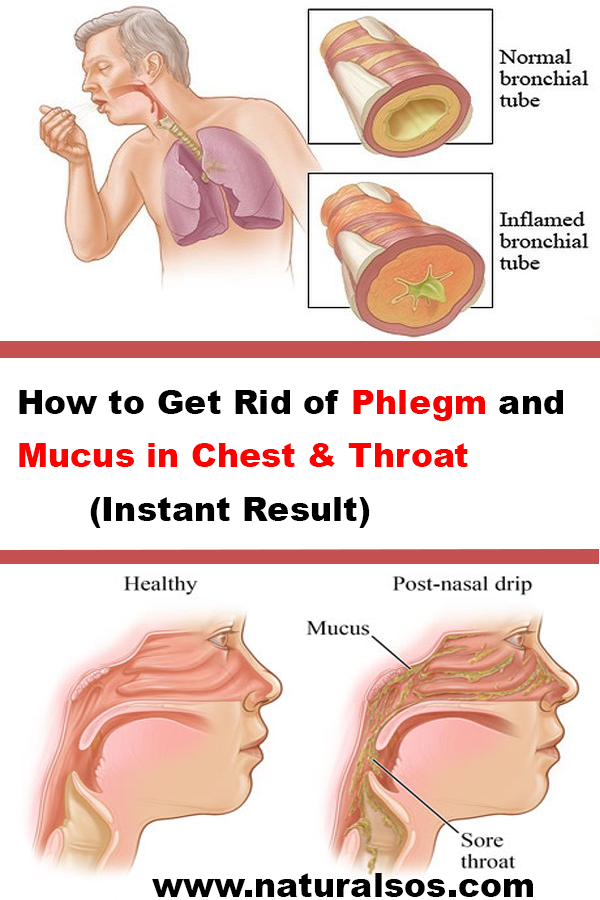 With SARS and whooping cough, cough is most often completely cured. If the patient ignores the doctor’s prescription, is weakened or smokes, an acute cough can turn into a chronic one. In this case, irreversible changes occur in the bronchi (chronic bronchitis, COPD), and coughing is very common. Frequent SARS and bronchitis can also be complicated by another chronic disease – bronchial asthma.
With SARS and whooping cough, cough is most often completely cured. If the patient ignores the doctor’s prescription, is weakened or smokes, an acute cough can turn into a chronic one. In this case, irreversible changes occur in the bronchi (chronic bronchitis, COPD), and coughing is very common. Frequent SARS and bronchitis can also be complicated by another chronic disease – bronchial asthma.
Chronic diseases cannot be completely cured, but modern therapy allows maintaining a good quality of life for such patients for many years. To do this, anti-inflammatory drugs often have to be taken in long courses.
If a wet cough is caused by bronchopulmonary cancer, the prognosis is cautious, closer to unfavorable. Cough most often indicates an advanced tumor. But even in such cases, surgery, chemotherapy or radiation therapy often help to significantly prolong life.
Preventive measures
Cough prevention includes:
● Fight against colds: annual flu vaccination, prophylactic use of antiviral during an outbreak, limiting contact with other people, frequent hand washing, wearing a mask.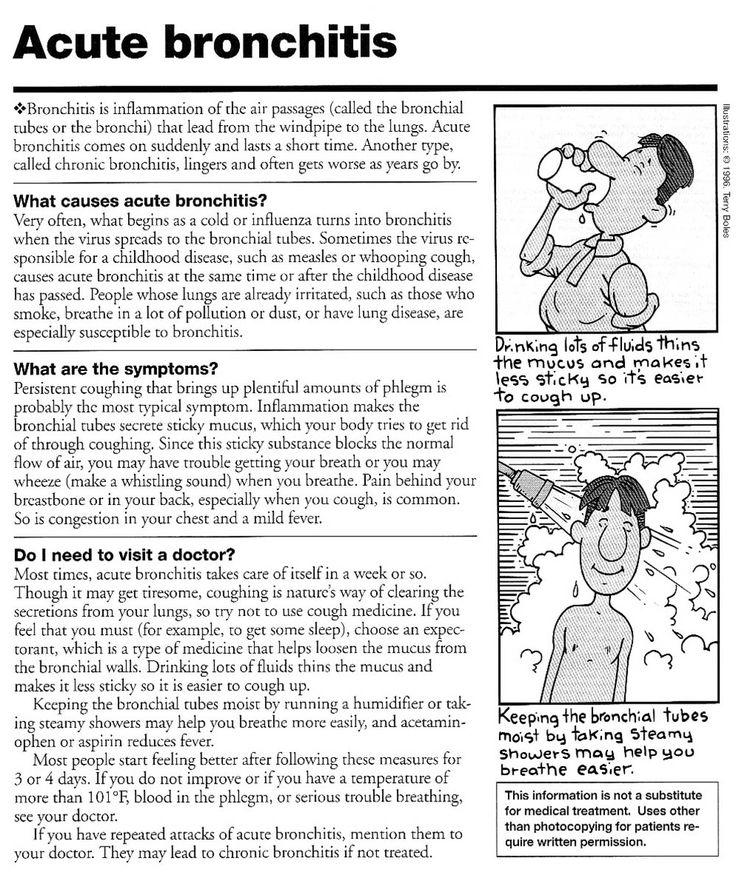
● Prevent hypothermia.
● Stop smoking tobacco, electronic cigarettes.
● Timely treatment of allergic and cardiovascular diseases.
● Wear a respirator when working in contaminated air.
Briefly about the main
➢ Wet is considered a cough that produces sputum. It occurs when, due to irritants or inflammation, the production of mucus increases, and the lumen of the bronchi narrows. To remove mucus from the respiratory tract, a person needs to cough up.
Wet cough is caused by viral, bacterial and fungal infections, as well as allergic diseases and other pathologies of internal organs. But most often the symptom is associated with viral diseases.
➢ Uncomplicated cough can be treated on its own. But you must definitely consult a doctor if the patient has pathologies of the cardiovascular system or with symptoms characteristic of them, he is weakened after the operation.
➢ For the treatment of cough, mucolytics, bronchodilators, antihistamines and antitussives are prescribed.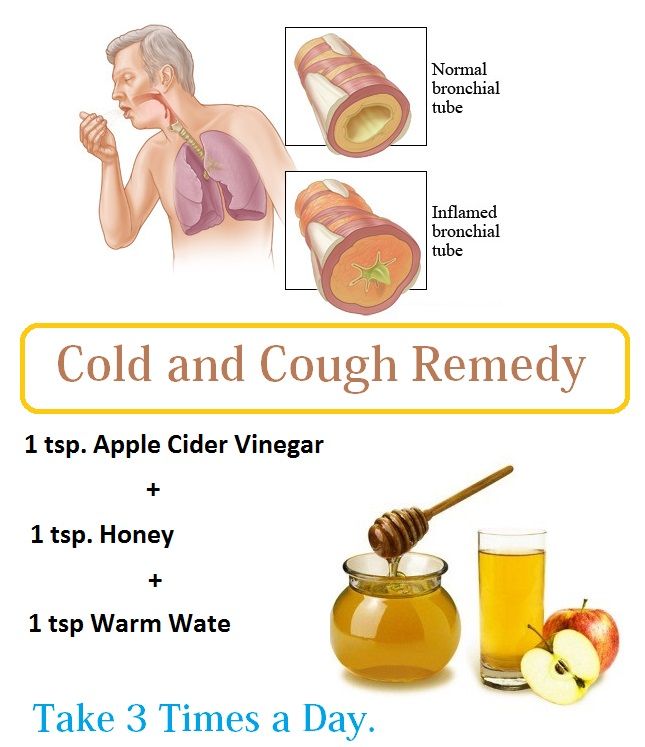 But one symptomatic therapy is not enough. To eliminate the cause of the disease, depending on the type of pathogen and the nature of its course, antiviral and antibiotics are prescribed.
But one symptomatic therapy is not enough. To eliminate the cause of the disease, depending on the type of pathogen and the nature of its course, antiviral and antibiotics are prescribed.
References:
1 Blokhin BM Modern approach to solving the problem of cough in acute respiratory infections in children. Questions of modern pediatrics. 2016; 15(1): 100–104.
2 Svistushkin V.M., Morozova S.V., Keda L.A. Actual aspects of the use of phytopreparations in acute infectious and inflammatory diseases of the upper respiratory tract. Medical Council Infections in Otorhinolaryngology 2021;(6):36–42.
3 Delyagin V.M. Complex phytovitamin preparations in the treatment of acute respiratory infections. breast cancer. Mother and child. 2019;2(4):347–350.
4 Interim guidelines of the Ministry of Health of the Russian Federation: Drug therapy for acute respiratory viral infections (ARVI) in outpatient practice during the COVID-19 pandemic; URL: https://minzdrav. gov.ru/news/2020/04/17/13756-opublikovana-vtoraya-versiya-metodicheskih-rekomendats… (date posted: 04/16/2020)
gov.ru/news/2020/04/17/13756-opublikovana-vtoraya-versiya-metodicheskih-rekomendats… (date posted: 04/16/2020)
5 Lioznov D.A., Karnaukhova E.Yu., Zubkova T.G., Shakhlanskaya E.V., Evaluation of the effectiveness of the ARVI treatment regimen, including etiotropic (enisamia iodide) and symptomatic therapy // Therapeutic archive No. 3 – 2020 G.
6 Timchenko V.N., Pavlova E.B. The use of a combination drug based on medicinal herbs with codeine in the treatment of acute respiratory diseases in children. Questions of modern pediatrics. 2007;6(5):96-99.
7 Geppe N. A., Farber I. M., Velikoretskaya M. D., Kondyurina E. G., Kozhevnikova T. N., Soroka N. D., Mokina N. A., Tsarkova S. A. New in the treatment of cough in acute respiratory diseases in pediatric practice. Attending doctor. 2017;9.
8 Kazachkov M. Etiology and differential diagnosis of chronic cough in children. Russian Bulletin of Perinatology and Pediatrics.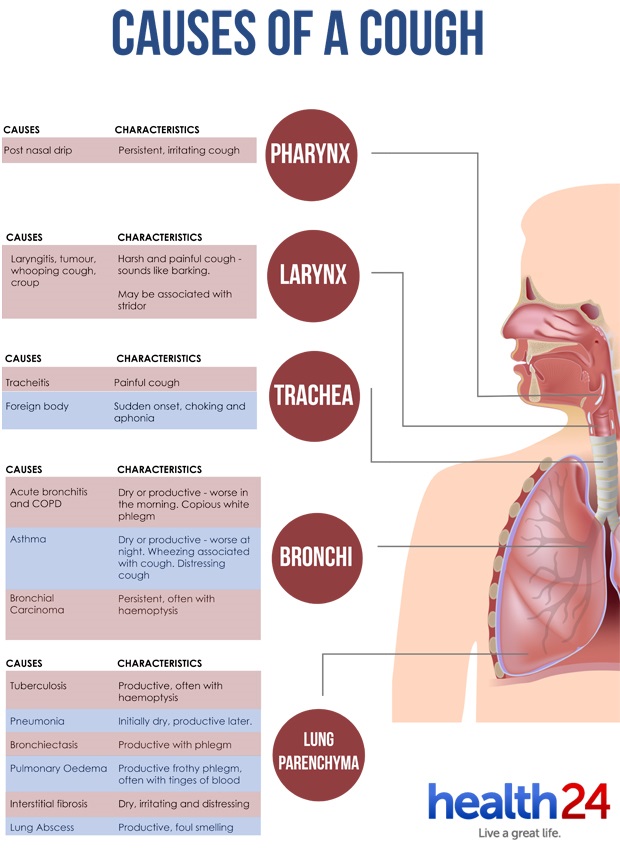 2013;3:54-61.
2013;3:54-61.
9 Malakhov AB, Kolosova NG, Grebeneva IV Cough in children: tactics of a pediatrician in relation to diagnosis and treatment. Practical pulmonology. 2021;3:46-52.
10 Karpova EP A new solution to the problem of choosing a drug for pathogenetically substantiated cough therapy in children. Questions of practical pediatrics. 2015;10(6):61–67.
11 Simonova O.I. Mucolytics for children: difficult questions, important answers. Questions of modern pediatrics. 2014;13(1):26–32.
12 Petrovskaya M.I., Kulichenko T.V. Phytopreparations in the treatment of inflammatory diseases of the upper respiratory tract. Pediatric pharmacology. 2012;9(1):104-108.
13 Selimzyanova L.R., Promyslova E.A., Vishneva E.A. Phytotherapy for cough in children. Pediatric pharmacology. 2013;10(4):128-130.
About the product
Download leaflet
Cough with phlegm.
 Treatment, causes.
Treatment, causes.
home
Articles
- How to treat cough with phlegm and what remedies are used in such cases?
Why the cough reflex develops and how to treat a cough
with mucus? How are drugs that are prescribed for a wet cough classified?
Wet cough: causes and treatment
see a doctor 1 . What is it like and how are drugs selected for its treatment?
Why do we cough?
Cough is a protective reaction of the body in response to irritation of receptors located in the respiratory tract. It can occur under the influence of various factors. The most common irritant is inflammation in the airways.
and the associated excess accumulation of bronchial mucus. Sometimes the cough reflex develops in response to the penetration of foreign particles, chemicals, allergens, and so on into the respiratory tract 2 .
If a cough is effective in clearing the airways, it is doing its job. But sometimes the reflex becomes a symptom of a number of conditions and diseases, including dangerous ones, so it is very important to correctly and timely establish its cause 2 .
Acute cough in a child or adult that lasts less than 3 weeks is most often caused by an acute respiratory infection such as a cold or flu.
When the upper or lower respiratory tract is affected, an inflammatory process develops, which is accompanied by excessive production of tracheobronchial mucus. There are a number of factors contributing to the appearance of cough, among which 3 :
Respiratory penetration
irritants
Inhalation of irritants such as dust, gas, tobacco smoke, etc.
Diseases of ENT – organs
With inflammation of the nasal mucosa, rhinitis, this symptom develops due to the flow of nasal mucus along the back of the pharynx (the so-called post-nasal syndrome).
 Reflex irritation of cough receptors with mucus can occur with sinusitis (inflammation of the paranasal sinuses), pharyngitis (inflammation of the pharyngeal mucosa), laryngitis (inflammation of the vocal cords).
Reflex irritation of cough receptors with mucus can occur with sinusitis (inflammation of the paranasal sinuses), pharyngitis (inflammation of the pharyngeal mucosa), laryngitis (inflammation of the vocal cords).Diseases of the respiratory system
The most common cause of cough is inflammation of the airways due to a respiratory infection. In addition, the cough reflex is a symptom of inflammation of the bronchi, lungs, bronchial asthma, chronic obstructive pulmonary disease (COPD), tuberculosis, malignant neoplasms (lung cancer).
Diseases of the cardiovascular system
Diseases of the cardiovascular system accompanied by heart failure. In such cases, the reflex is usually prolonged.
Diseases of the digestive tract
Diseases of the digestive tract, especially gastroesophageal reflux disease (GERD).
Infectious diseases
Infectious diseases, in particular whooping cough.
 Its most striking symptom is a long, agonizing dry cough.
Its most striking symptom is a long, agonizing dry cough.Side effects of drugs
Side effects of certain drugs, such as blood pressure lowering drugs (ACE inhibitors).
Psycho-emotional disorders
Psycho-emotional disorders – with a habitual cough of a psychogenic nature.
What is bronchial mucus?
Normally, the bronchial glands of the bronchial mucosa constantly produce bronchial secretions, or mucus. It consists mainly of water, in which minerals are dissolved, and proteins of glycoproteins. Bronchial secretion performs an important function – it “detains” dust particles inhaled
with air, and then removed from the lumen of the bronchi 4 .
In healthy people, mucus is excreted constantly and evenly, without irritating the cough receptors. But with inflammation of the respiratory tract, a failure occurs in the established mechanism. The composition and quality of bronchial secretion changes: the water content in it decreases, the level of proteins increases, which leads to an increase in viscosity.
The composition and quality of bronchial secretion changes: the water content in it decreases, the level of proteins increases, which leads to an increase in viscosity.
In addition, due to the inflammatory process, the work of the ciliated epithelium is disrupted 4 .
This contributes to the accumulation of mucus (phlegm) and coughing. In such a situation, the cough reflex, on the one hand, contributes to the removal of excess bronchial mucus, and on the other hand, spreads the infection. Therefore, it is so important to diagnose the disease in time and start treatment 4 .
Types of cough
In order to make a correct diagnosis, the doctor asks the patient for various characteristics of cough, including 5 :
Duration.
Acute cough lasts less than 3 weeks, subacute lasts 3-8 weeks, and chronic,
persistent cough that does not stop for a long time
8 weeks or more
Time of onset.
Depending on the time of day, the cough is morning, afternoon, evening, night
Character.

A cough that produces sputum is called productive or wet cough.
If mucus is not secreted, cough is considered
dry. The latter, unlike wet, has no physiological significance and significantly reduces the patient’s quality of life
Rhythm.
There are paroxysmal cough, coughing (most often occurs with a dry cough that occurs without fever), a series of coughing shocks
and other types
Timbre.
Cough can be barking, hoarse, silent, short
Depending on the characteristics of the symptom, medical history, examination of the patient, laboratory tests, x-rays (if necessary) and other instrumental methods of examination, the specialist prescribes medication.
What drugs are used?
The goal of treatment is to eliminate the root cause of the disease and its symptoms. Medicines play a central role in treatment. There are two main groups of drugs that are used to treat cough – antitussives and so-called expectorants 6 .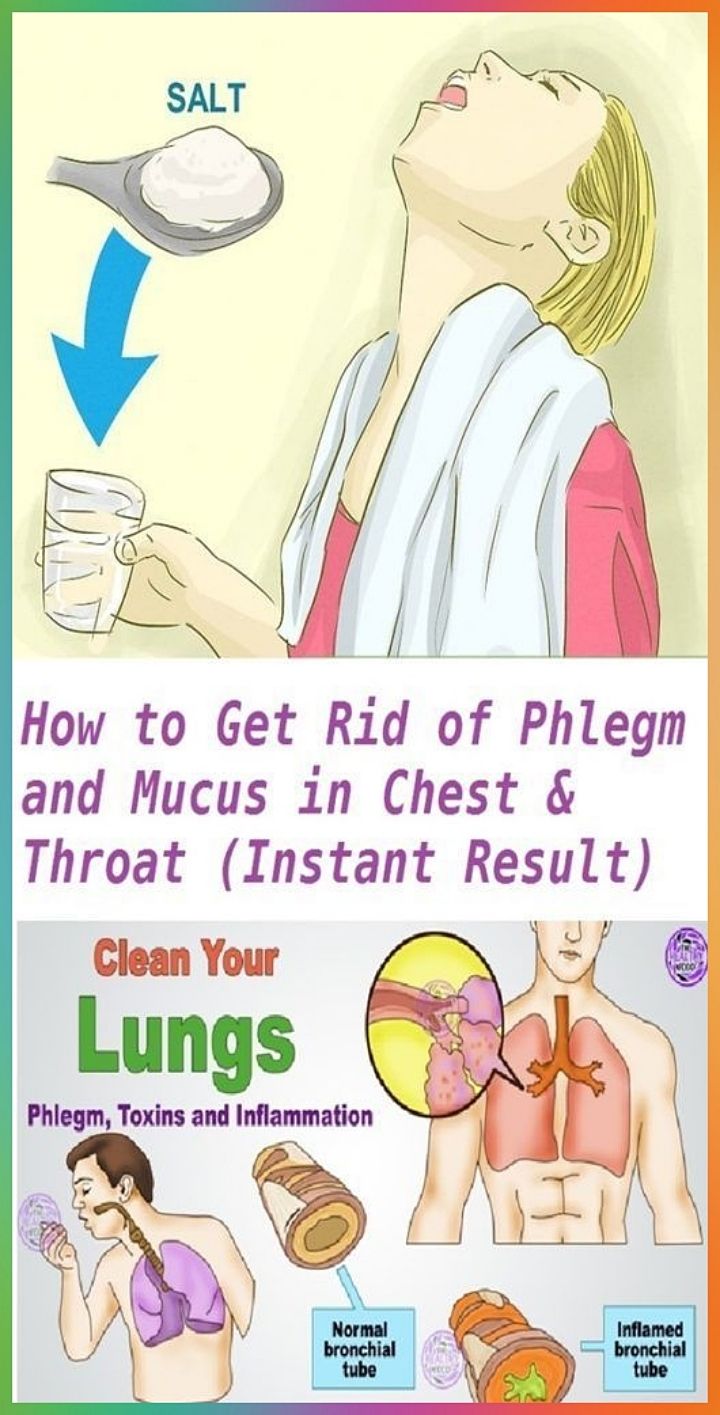
Antitussive drugs inhibit the cough reflex. Centrally acting drugs block the cough center in the medulla oblongata. Means of peripheral action exhibit an anesthetic effect on the sensitive endings located in the mucous membrane of the respiratory tract, “freezing” them and preventing irritation. Antitussive drugs are prescribed only for dry, severe
cough without sputum production 6 .
Expectorants are used for wet coughs. They can act in a variety of ways. Expectorants facilitate the expectoration of sputum. Indications for their use – cough with thick, difficult to separate viscous sputum. Expectorants increase the production of the liquid component of sputum and increase bronchial motility, improving sputum transport 6-8 .
Mucolytics, unlike expectorants, provide sputum thinning due to a complex effect on the composition of the tracheobronchial secret. They normalize the physico-chemical properties of mucus, reducing its viscosity, further stimulating its production.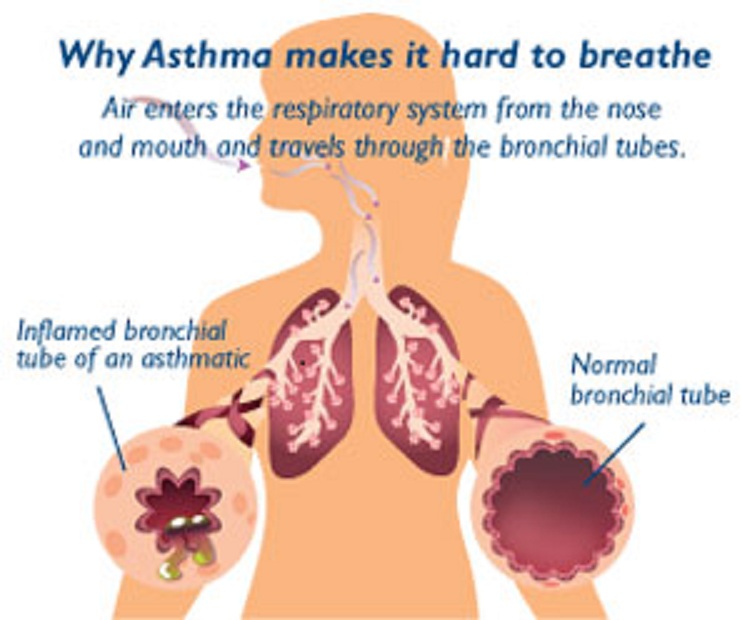

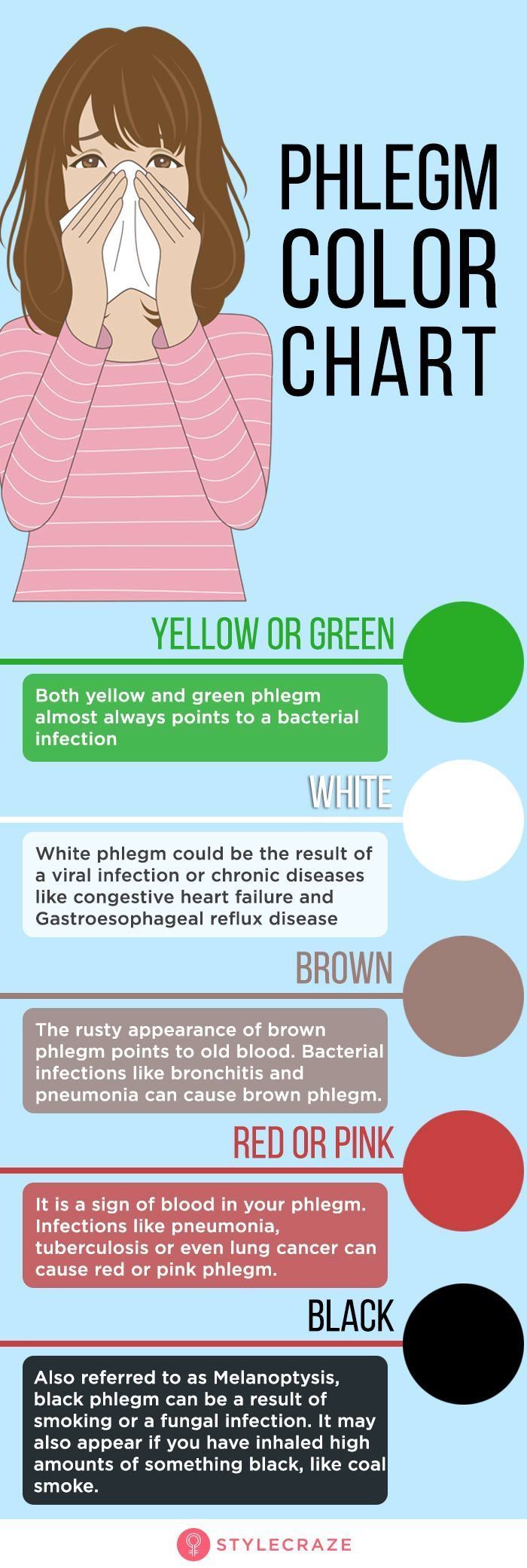
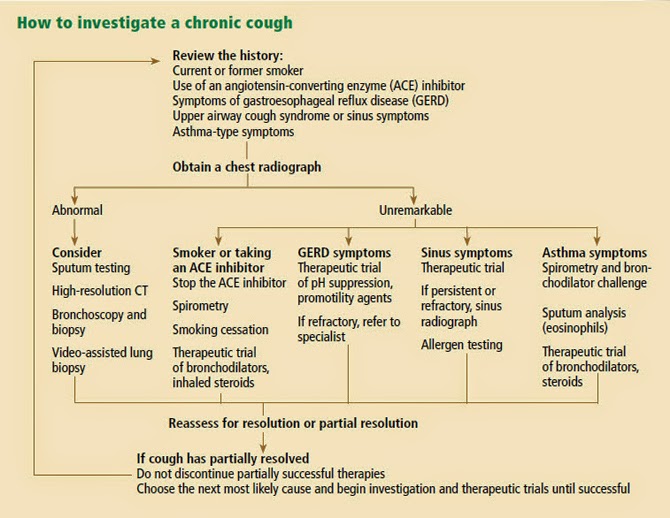

 Reflex irritation of cough receptors with mucus can occur with sinusitis (inflammation of the paranasal sinuses), pharyngitis (inflammation of the pharyngeal mucosa), laryngitis (inflammation of the vocal cords).
Reflex irritation of cough receptors with mucus can occur with sinusitis (inflammation of the paranasal sinuses), pharyngitis (inflammation of the pharyngeal mucosa), laryngitis (inflammation of the vocal cords). Its most striking symptom is a long, agonizing dry cough.
Its most striking symptom is a long, agonizing dry cough.